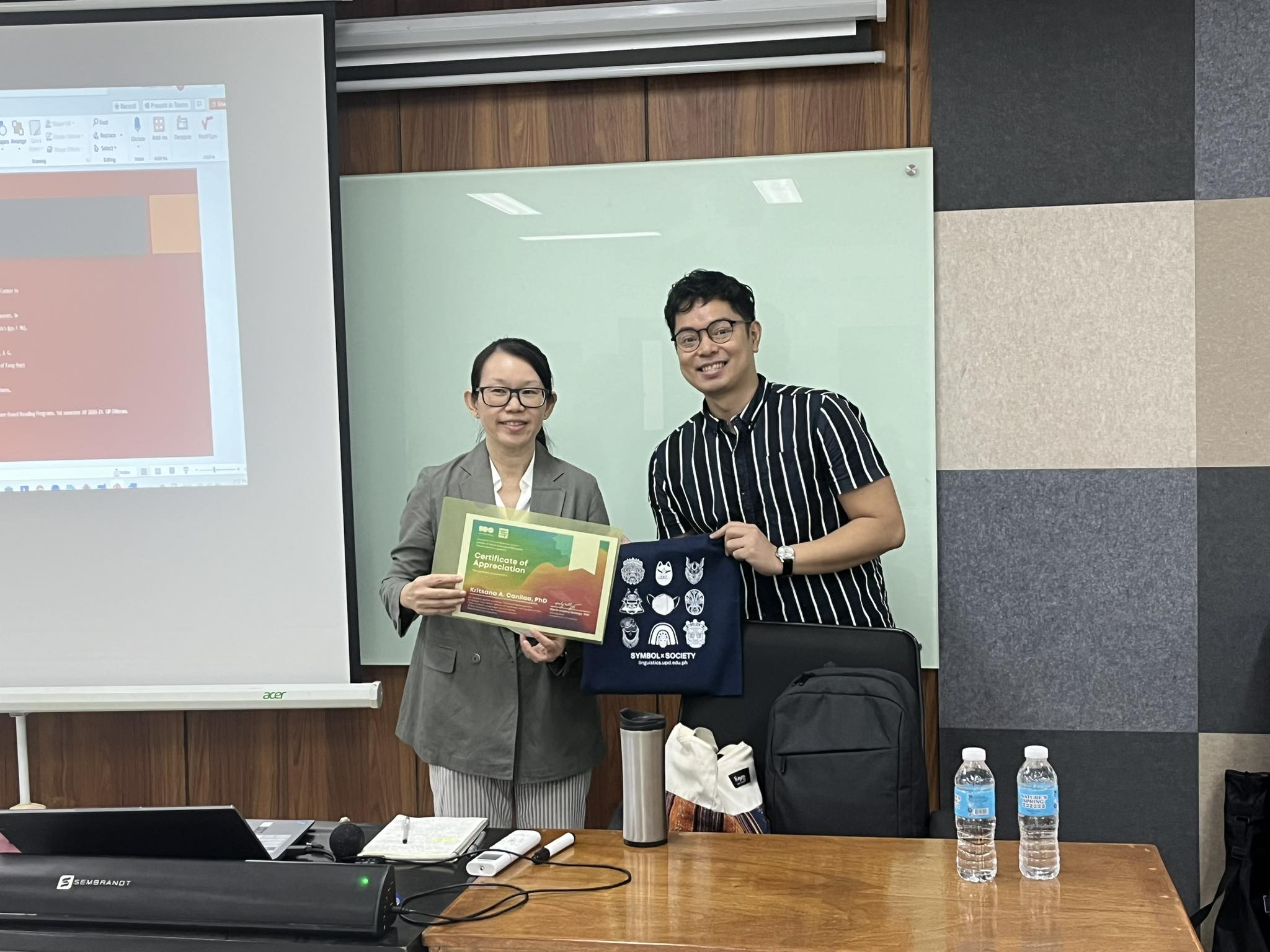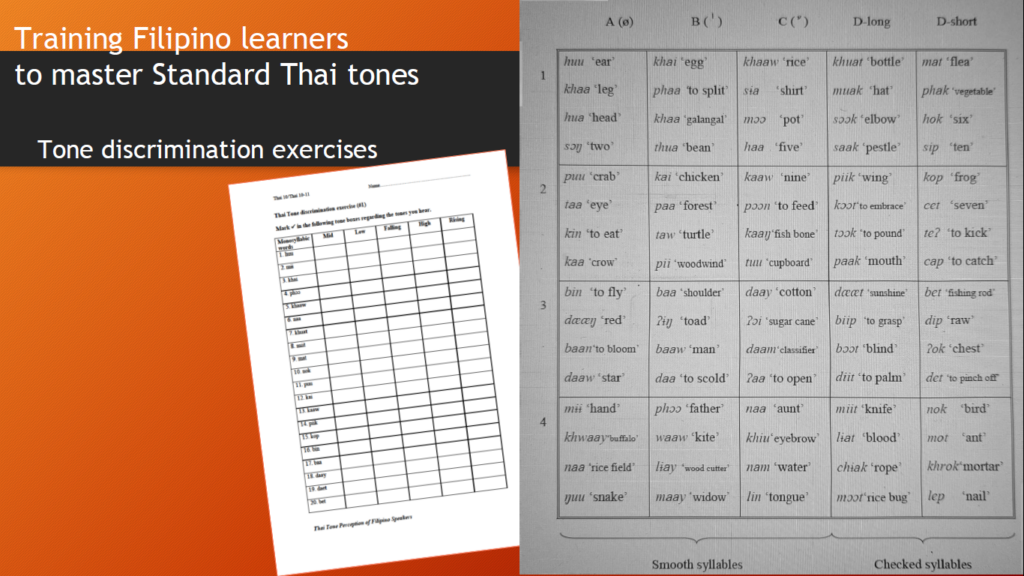
For the final installment of the Talks on Asian Languages (TAL) this year, assistant professorial fellow Dr. Kritsana A. Canilao discussed some of her findings regarding the training of Filipino students learning standard Thai tones. This in-person event was held last December 13 at Palma Hall 428.
Tone refers to the pitch range that affects the meaning of a word. This is often confused with intonation which is a feature that conveys information about the whole sentence (i.e. whether it is a question, a command, etc.). Every syllable in Thai carries a corresponding tone. Aside from Thai with five tones, other tonal languages are Vietnamese with six tones, and those spoken in southern China with as many as 9 tones.
Dr. Canilao began her lecture by stating that she does not grade her students based on their speech tones primarily because it takes time to learn the proper usage of Thai tones. In fact, even native speakers misunderstand each other because of confusion in tones. But she observed that students often write about their pronunciation, particularly their concerns regarding tones, in their weekly learning log guide. Adapted from Padilla (2020), this assessment tool contains questions about what students learned in class that week; their misconceptions, realizations, and other curiosities; and plans for improvement.

To illustrate the different tones in Thai, Dr. Canilao prompted the attendees, mainly composed of students from Thai language classes, to pronounce the string khaa in mid (khaa ‘to be lodged in’), low (khàa ‘galangal root’), falling (khâa ‘slave, servant’), high (kháa ‘to sell’), and rising (khǎa ‘leg’) tones. She noted that Filipino learners, including the audience members, find the falling and high tones difficult to produce, while they are more confident in pronouncing syllables with the rising tone.
A brief demonstration of how Thai tones can be studied using PRAAT software was also conducted. After a volunteer pronounced khaa using the five tones, Dr. Canilao described the recorded pitch reflected in the spectrogram and compared this result with the typical representation of standard Thai tones.
Canilao then explained that in her classes, one important form of assessment is through tone discrimination exercises. This involves marking words with their appropriate tone symbols. Through this activity, she noticed that Filipino students, whether enrolled in beginner or intermediate and advanced classes, struggle with identifying tones. This observation supports her hypothesis regarding the disparities in perception and challenges in the production of tones.

Interestingly, Dr. Canilao recounted several scenarios when she tried to make students understand certain aspects of the Thai language by utilizing local examples. For instance, she illustrated the concept of tone by discussing how Filipino students pronounce common expressions such as Bababa ba? (‘Are we/you going down?’) and Talaga? (‘Really’?). It was also helpful to mention differences between Thai and Tagalog sound systems, such as the presence of aspirated consonants in the former and their absence in the latter.
Finally, Canilao elaborated on the learning activities that she incorporates in her classes. Among these are listening to video voiceovers, singing along to Thai songs, creating memes, talking to natives, and utilizing speech-to-text applications. She also encourages students to enroll in conversational Thai courses, such as the Department’s extramural classes.
Some questions raised during the open forum were about the inclusion of historical and linguistic content into Thai classes; the differences in pitch range between men and women; and how knowledge of other tonal languages can affect learning Thai tones. Colleagues from the Department also inquired about the representation of tones in Dr. Canilao’s research (i.e. the notation she uses) and mentioned the idea of using pitch monitor applications to help language learners.
The input and data for this ongoing research come from students enrolled in Thai classes offered by the Department. We look forward to future findings of this long-term work, Ma’am Poi!
Published by Patricia Anne Asuncion



